WWII RESTRICTED 1945 US Army Air Forces Special Air Navigator Map of Japan Relic
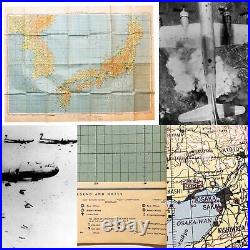
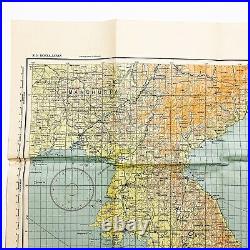
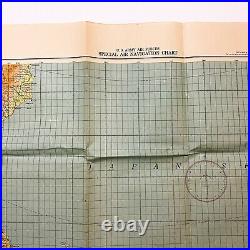
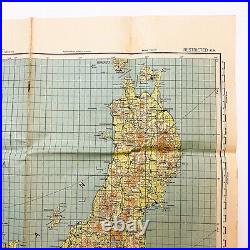
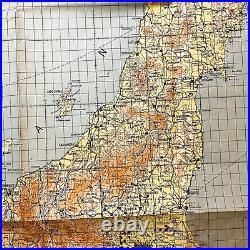
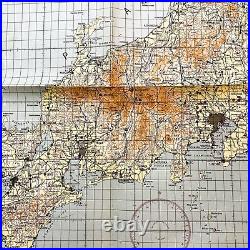
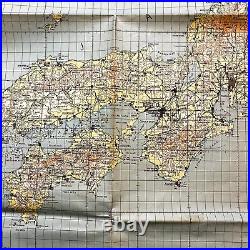
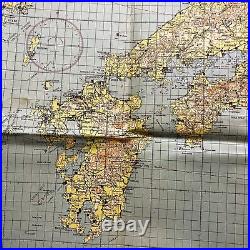
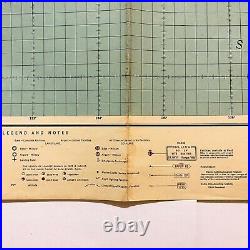
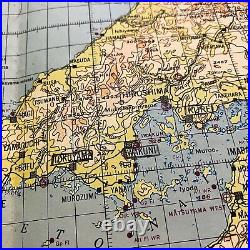
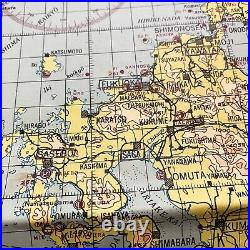
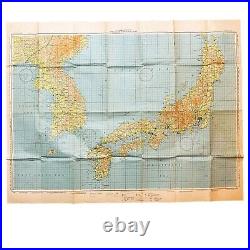

Size: 59.5 x 39 inches. While the bombing group this map map came from is unknown, the map is marked in pencil with target in Japan and are believed to be ID markings of missions and targets. The map has target marking on Osaka, Okuyama, Wakuni, Yokohama, Hitachi, Hamamatsu, Miyaza. Ki, Miyankonojo, Sasenbo, Saga, Fukuoka, and Yawata. Zoom up on the map to see markings and. Research can most likely be traced to a Bomber Group! This extremely large and rare 1945 dated U. Army Air Forces Special Air Navigation map shows the final stages of the United States war with Japan during World War II. As this map is marked RESTRICTED, it shows the entire country of Japan as it is detailed and very labeled with its military bases, airports, landing fields, as well as naval naval bases, and naval airports, and ammunition facilities. As the United States began to gain control of the islands such as he was Iwo Jima and other islands closer to the Japanese territory if began sending its bomber on bombing runs to the mainland of Japan bombing these targets. This navigators map would have not only been used by the navigator, but also the bombardier as well as the pilots during preflight course evaluations. Maps such as these would have been likely kept by the navigator during the inflight journey towards the target. Air Raids on Japan. Allied forces conducted many air raids on Japan during World War II, causing extensive destruction to the country’s cities and killing between 241,000 and 900,000 people. During the first years of the Pacific War these attacks were limited to the Doolittle Raid in April 1942 and small-scale raids on military positions in the Kuril Islands from mid-1943. Strategic bombing raids began in June 1944 and continued until the end of the war in August 1945. Allied naval and land-based tactical air units also attacked Japan during 1945. The United States military air campaign waged against Japan began in earnest in mid-1944 and intensified during the war’s last months. While plans for attacks on Japan had been prepared prior to the Pacific War, these could not begin until the long-range B-29 Superfortress bomber was ready for combat. From June 1944 until January 1945, B-29s stationed in India staged through bases in China to make a series of nine raids on targets in western Japan, but this effort proved ineffective. The strategic bombing campaign was greatly expanded from November 1944 when bases in the Mariana Islands became available as a result of the Mariana Islands Campaign. These attacks initially attempted to target industrial facilities using high-altitude daylight “precision” bombing, which was also largely ineffective. From February 1945, the bombers switched to low-altitude night firebombing against urban areas as much of the manufacturing process was carried out in small workshops and private homes: this approach resulted in large-scale urban damage. Aircraft flying from Allied aircraft carriers and the Ryukyu Islands also frequently struck targets in Japan during 1945 in preparation for the planned invasion of Japan scheduled for October 1945. During early August 1945, the cities of Hiroshima and Nagasaki were struck and mostly destroyed by atomic bombs. Japan’s military and civil defenses were unable to stop the Allied attacks. Fuel shortages, inadequate pilot training, and a lack of coordination between units also constrained the effectiveness of the fighter force. Despite the vulnerability of Japanese cities to firebombing attacks, the firefighting services lacked training and equipment, and few air raid shelters were constructed for civilians. As a result, the B-29s were able to inflict severe damage on urban areas while suffering few losses. The Allied bombing campaign was one of the main factors which influenced the Japanese government’s decision to surrender in mid-August 1945. However, there has been a long-running debate over the morality of the attacks on Japanese cities, and the use of atomic weapons is particularly controversial. The most commonly cited estimate of Japanese casualties from the raids is 333,000 killed and 473,000 wounded. There are a number of other estimates of total fatalities, however, which range from 241,000 to 900,000. In addition to the loss of mostly civilian life, the raids contributed to a large decline in industrial production. This item is in the category “Collectibles\Militaria\WW II (1939-45)\Original Period Items\United States\Field Gear, Equipment”. The seller is “worldwarartifactsandrelics” and is located in this country: US. This item can be shipped worldwide.
- Country/Region of Manufacture: Japan

